Top Gaming Monitors for All Gamers
A monitor is essential for harnessing the full potential of your gaming PC, showcasing stunning graphics and fast refresh rates that your high-end components are capable of delivering. Why spend on a powerful GPU and CPU if your display can't match their performance? That's why we've handpicked the best gaming monitors, ensuring crisp visuals and smooth motion to elevate your gaming experience to its intended level.
TL;DR – These Are the Best Gaming Monitors:
 Our Top Pick### Gigabyte FO32U2 Pro
Our Top Pick### Gigabyte FO32U2 Pro
6See it at AmazonSee it at Newegg ### AOC Q27G3XMN Mini-LED Gaming Monitor
### AOC Q27G3XMN Mini-LED Gaming Monitor
2See it at Amazon ### Acer Predator X34 OLED
### Acer Predator X34 OLED
0See it at AmazonSee it at B&H  ### Dell Alienware AW2725Q
### Dell Alienware AW2725Q
1See it at Dell ### Asus ROG Swift PG27AQDP
### Asus ROG Swift PG27AQDP
0See it at Newegg ### Asus TUF Gaming VG279QM
### Asus TUF Gaming VG279QM
1See it at AmazonYour gaming monitor should be in sync with your PC's capabilities. There's no benefit in choosing one of the best 4K monitors if your games struggle to run smoothly with a GeForce RTX 4060 at that resolution. Similarly, pairing a Radeon RX 7900 XTX with a 1080p display would underutilize its potential. The best gaming monitors will showcase your PC's full capabilities, offering excellent picture quality, rapid response times, and a suite of gaming features. High refresh rates ensure smooth gameplay, which can be crucial in competitive scenarios.
Whether you're looking for a top-tier, future-proof monitor with a sharp 4K display, an OLED panel, and a blazing 240Hz refresh rate, like our top pick, the Gigabyte FO32U2 Pro, or a budget-friendly option that complements a more modest setup, we've got you covered. Our recommendations have been rigorously tested and are designed to meet various needs.
Looking for savings? Check out the best gaming monitor deals currently available.
Gigabyte Aorus FO32U2 Pro – Photos

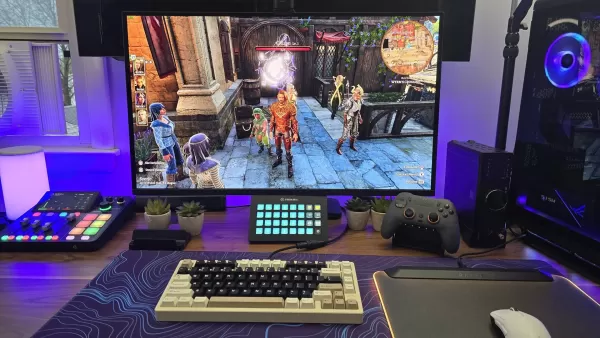 13 Images
13 Images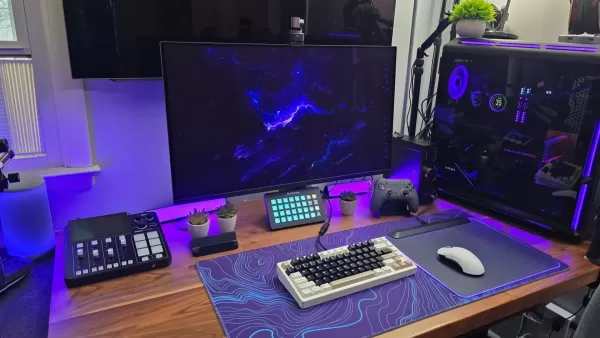


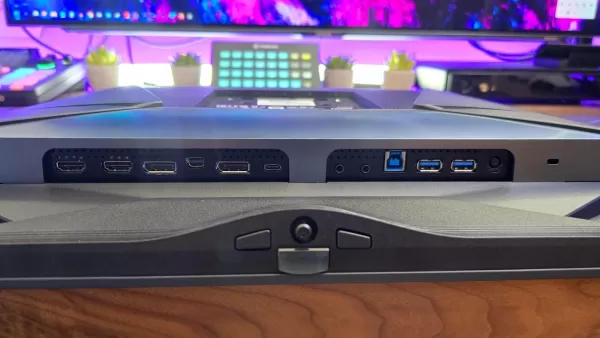 1. Gigabyte FO32U2 Pro
1. Gigabyte FO32U2 Pro
Best Gaming Monitor
 Our Top Pick### Gigabyte FO32U2 Pro
Our Top Pick### Gigabyte FO32U2 Pro
6This stunning monitor delivers on all fronts thanks to its wealth of features and OLED panelSee it at AmazonSee it at NeweggProduct SpecificationsScreen size31.5"Aspect ratio16:9Resolution3840x2160Panel typeOLEDHDR compatibilityHDR TrueBlack 400Brightness1,000 nitsRefresh rate240HzResponse time0.03msInputs2 x HDMI 2.1, 1 x DisplayPort 1.4PROSOutstanding picture qualityExtremely thin panelCONSExpensiveThe Gigabyte FO32U2 Pro is a testament to the prowess of OLED technology in modern gaming monitors. This 32-inch 4K marvel features an ultra-thin panel and one of the brightest displays I've encountered. Though it comes with a higher price tag, the investment is justified by its exceptional performance and future-proofing.
Even with current graphics cards struggling to achieve 240Hz at 4K, the Gigabyte Aorus FO32U supports this high refresh rate, ensuring it remains relevant for years to come. It even includes support for DisplayPort 2.1, a feature ahead of its time. The OLED panel boasts impressive color accuracy, covering up to 99% of the DCI-P3 color gamut, and delivers a peak brightness of 1,000 nits with a contrast ratio of 1.5M:1, making every visual pop off the screen.
Additionally, this flagship monitor includes features like picture-in-picture and an automatic black equalizer for enhanced viewing. With the Gigabyte Control Center, you can easily manage settings via a USB connection, making adjustments seamless. This monitor is a dream for gamers, offering top-tier performance for a premium price.
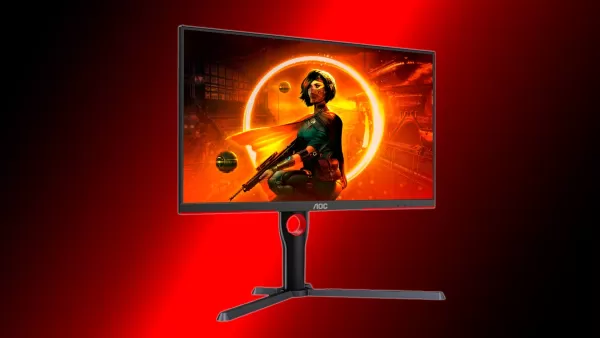 2. AOC Q27G3XMN Mini-LED
2. AOC Q27G3XMN Mini-LED
Best Budget Gaming Monitor
 ### AOCQ27G3XMN Mini-LED Gaming Monitor
### AOCQ27G3XMN Mini-LED Gaming Monitor
0QHD, 1440p, a high refresh rate, and a mini-LED backlight for true HDR?! Scoop up this monitor while the price is still low!See it at AmazonProduct SpecificationsScreen size27"Aspect ratio16:9Resolution2560x1440Panel typeVAHDR compatibilityHDR1000Brightness1,000 nitsRefresh rate180HzResponse time1ms (GTG)Inputs1 x DisplayPort 1.4, 2 x HDMI 2.0, 1 x 3.5mm AudioPROSMini-LED backlight technologyHigh refresh rate for improved responsiveness and decreased motion blurPeak brightness of 1,000 nits for true HDRCONSNo USB connectivityLimited local dimming zonesThe AOC Q27G3XMN Gaming Monitor provides a genuine HDR experience at a budget-friendly price, thanks to its mini-LED backlight. This technology allows for localized brightness and contrast up to 1,000 nits, offering a true HDR experience rather than the watered-down versions often found elsewhere.
Utilizing a VA panel, this monitor delivers improved contrast with local dimming enabled or disabled. With 336 local dimming zones, it excels at rendering deep blacks and vibrant colors. Despite its lower cost, the 27-inch display paired with its 1440p resolution ensures crisp visuals and smooth gameplay. While it lacks some amenities like USB connectivity, its price and performance make it a compelling choice.
However, the trade-off for the lower price is fewer local dimming zones, which can result in noticeable blooming around bright objects on dark backgrounds. Though this might be less apparent during gameplay, it's a factor to consider. Overall, the AOC Q27G3XMN offers impressive visuals that stand out in its price range.
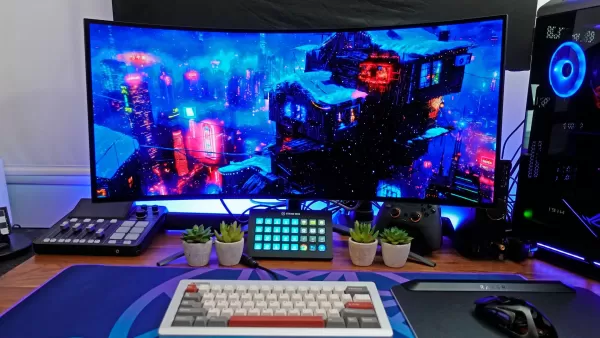 3. Acer Predator X34 OLED
3. Acer Predator X34 OLED
Best Ultrawide Gaming Monitor
 ### Acer Predator X34 OLED
### Acer Predator X34 OLED
0On top of its spacious 34-inch 21:9 display, Acer's Predator X34 OLED checks every box you would hope for from a flagship gaming monitor. See it at AmazonSee it at B&H Product SpecificationsScreen size34Aspect ratio21:9Resolution3440x1440Panel typeOLEDHDR compatibilityVESA DisplayHDR True Black 400Brightness1,300 cd/m2 (peak)Refresh rate240HzResponse time0.03msInputs2 x HDMI 2.1, 1 x DisplayPort 1.4, 2 x USB 3.2 Gen 2 Type-CPROSDeep blacks and bright highlightsRich, engaging colorsExcellent refresh rate and response timeOffers an immersive gaming experience CONSDeep curvature isn't for everyoneOnly reference preset is DCI-P3, not sRGBThe Acer Predator X34 OLED is a standout choice for an ultrawide gaming monitor in 2025. Its 34-inch 21:9 display is complemented by a deep 800R curvature, creating an immersive gaming environment that envelops your field of vision. While this curvature enhances gaming, it may not be ideal for productivity due to slight text distortion.
This monitor's OLED panel delivers a 0.03ms response time, outperforming IPS, VA, and TN panels in speed. At a 240Hz refresh rate, it offers minimal input latency, perfect for competitive gaming. Its peak brightness of 1,300 nits ensures vibrant highlights and deep blacks, setting it apart from other gaming monitors.
Despite its impressive features, it lacks an sRGB mode, which might be a drawback for content creators. However, it does offer a DCI-P3 mode, providing a reliable color reference for professionals.
Alienware AW2725Q - Photos
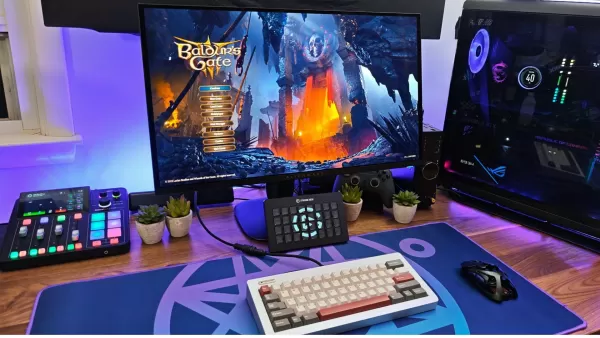
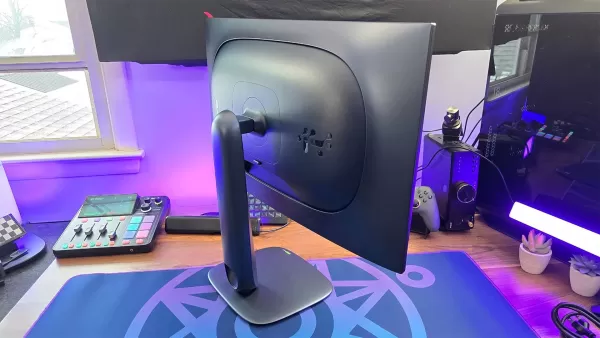 15 Images
15 Images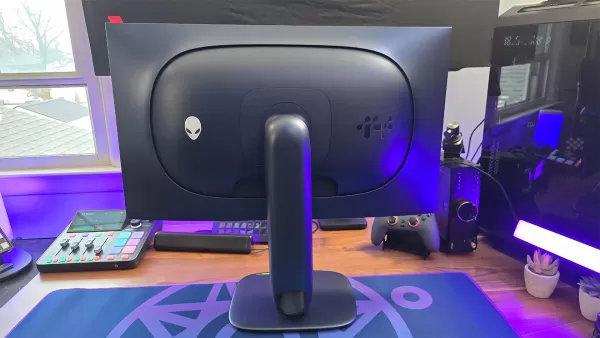

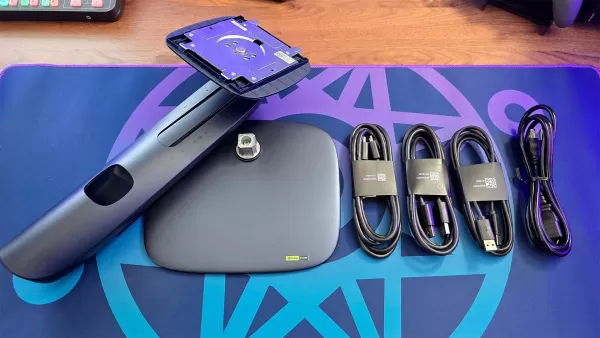
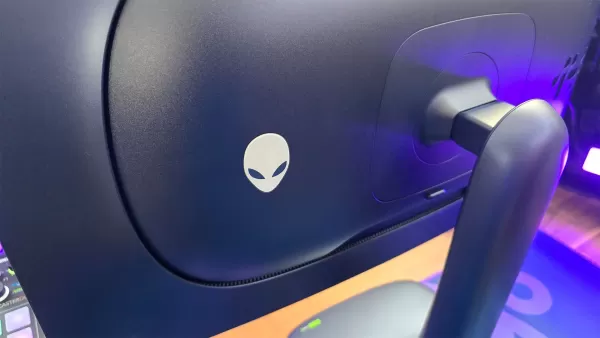 4. Dell Alienware AW2725Q
4. Dell Alienware AW2725Q
Best 4K Gaming Monitor
 ### Dell Alienware AW2725Q
### Dell Alienware AW2725Q
1Dell's Alienware AW2725Q manages to feel like a good value among high-end gaming monitors. Its support for Dolby Vision and console-friendly design make it a great choice for those who like to jump between platforms.See it at DellProduct SpecificationsScreen size26.7"Aspect ratio16:9Resolution3840x2160Panel typeQD-OLEDHDR compatibilityVESA DisplayHDR True Black 400Brightness1,000 nitsRefresh rate240HzResponse time0.03msInputs2 x HDMI 2.1, 1 x DisplayPort 1.4, 3 x USB 3.2 Gen 1 Type-A, 1 x USB 3.2 Gen 1 Type-CPROSGorgeous picture with high PPI for improved clarityImpressive color accuracy right out of the boxGood value for what it offersCONSLow SDR brightnessLacks DisplayPort 2.1The Dell Alienware AW2725Q offers stunning visuals and performance at 4K, making it an excellent choice for gamers seeking high-end quality. This monitor features an upgraded QD-OLED panel and a 240Hz refresh rate, enhancing its predecessor's capabilities. Its sleek design integrates well with various setups, and its high pixel density of 166PPI ensures crisp and clear details.
The OLED panel delivers outstanding colors and supports VESA DisplayHDR True Black 400 and Dolby Vision HDR, ensuring a fantastic viewing experience. In my review, I was impressed by its versatile preset modes and color calibration options, which are great for both gaming and content creation.
While its SDR brightness is lower, it performs well indoors and reaches 1,000 nits in HDR mode. Its 0.03ms response time and 240Hz refresh rate make it ideal for competitive gaming. However, it only supports DisplayPort 1.4, which may require Display Stream Compression for full resolution and refresh rate. At a launch price of $899, it offers a solid value.
Asus ROG Swift OLED PG27AQDP – Photos

 19 Images
19 Images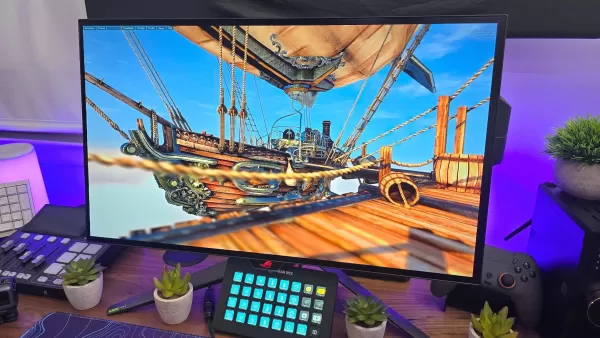
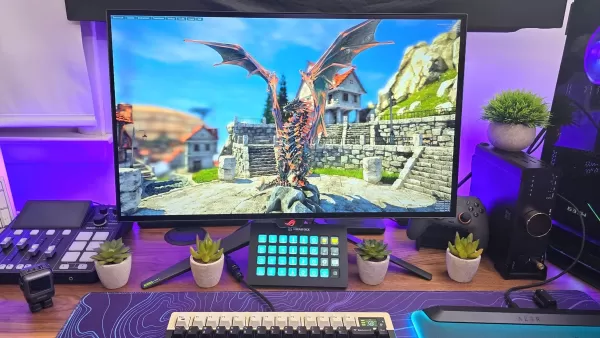
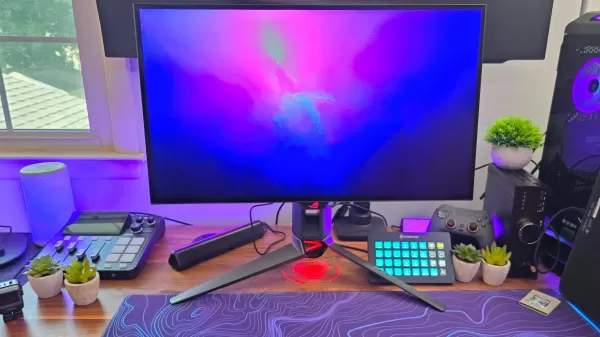
 5. Asus ROG Swift PG27AQDP
5. Asus ROG Swift PG27AQDP
Best 1440p Gaming Monitor
 ### Asus ROG Swift PG27AQDP
### Asus ROG Swift PG27AQDP
0The Asus ROG Swift PG27AQDP is a killer gaming monitor that checks all of the boxes a competitive gamer could want.See it at NeweggProduct SpecificationsScreen size26.5Aspect ratio16:9Resolution2560 x 1440Panel typeOLED FreeSync Premium, G-Sync CompatibleHDRVESA DisplayHDR True Black Brightness1,300 cd/m2 (peak)Refresh rate480HzResponse time 0.03msInputs2 x HDMI 2.1, 1 x DisplayPort 1.4, 2 x USB 3.2 Gen 2 Type-A, HeadphonesPROSPerfectly sized for 1440pCan get exceptionally bright and infinitely dark for great HDRNative 480Hz refresh rateOut of the box color accuracyCONSFew games, outside of esports, will ever hit 480HzThe Asus ROG Swift PG27AQDP is the ultimate 1440p monitor for esports and beyond. Priced competitively, this monitor offers something for everyone. Its WOLED panel provides exceptional HDR performance with peak brightness and infinite contrast, while its out-of-the-box color accuracy is among the best I've tested.
Its 480Hz refresh rate is a game-changer, nearly matching the fastest gaming monitors available today. This high refresh rate, combined with a 0.03ms response time, virtually eliminates motion blur, providing a smooth experience for quick movements in competitive games.
The monitor's stunning visuals extend to movies and multimedia, making it a versatile choice. It also features robust OLED protection measures, including pixel shifting, dynamic dimming, and a high-performance cooling system, all backed by a three-year warranty with burn-in coverage. While it lacks KVM or USB video input, the Asus ROG Swift PG27AQDP is a top contender in its class.
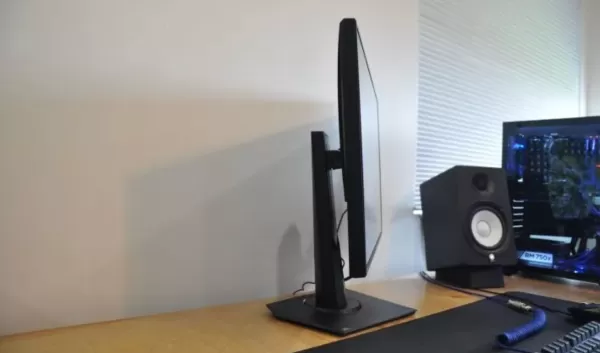
Adjustable stand on the Asus TUF Gaming VG279QM 6. Asus TUF Gaming VG279QM
Best 1080p Gaming Monitor
 ### Asus TUF Gaming VG279QM
### Asus TUF Gaming VG279QM
1A 27-inch Full HD display with an overclockable 240Hz refresh rate, low input lag, and adaptive sync for smooth action.See it at AmazonProduct SpecificationsScreen size27"Aspect ratio16:9Resolution1,920 x 1,080Panel typeIPS FreeSync, G-Sync compatibleBrightness400cd/m2Refresh rate240Hz, 280Hz (OC)Response time1ms (GtG)Inputs2 x HDMI 2.0, 1 x DisplayPort 1.2PROSBudget priceExcellent motion handlingCONSSome pixel peeping1080p monitors like the Asus TUF Gaming VG279QM still hold their ground, especially for budget-conscious gamers. Priced under $300, this monitor offers an overclockable 240Hz refresh rate, a one-millisecond response time, and low input lag, ensuring smooth gameplay. Its FreeSync and G-Sync compatibility ensures tear-free visuals.
The 27-inch screen provides an immersive experience, though some pixel peeping might occur. Its IPS panel offers good viewing angles and color reproduction, and its 400-nit brightness makes it suitable for brighter environments. While it's DisplayHDR 400 certified, its HDR capabilities are limited due to the lack of local dimming.
Additional features like a height-adjustable stand and multiple connectivity options make it a solid choice for gamers looking for value without compromising performance.
AnswerSee Results How to Choose a Gaming MonitorWhen selecting a gaming monitor, consider four key aspects: screen size, resolution, panel type, and aspect ratio. We'll also touch on technical specifications like refresh rate and variable refresh rate technology to help you make an informed decision.
Screen size: The first decision you'll face is "how big?" This depends on your specific situation, whether you're in a compact space or seeking a monitor to replace your TV. Use a measuring tape to ensure the size fits your setup. Here are some guidelines for matching size and resolution: For 1080p, up to 27 inches works well; for 1440p, 27 to 32 inches is ideal; for 4K, a 32-inch monitor is suitable for desk use, while larger sizes are better for sitting further back.
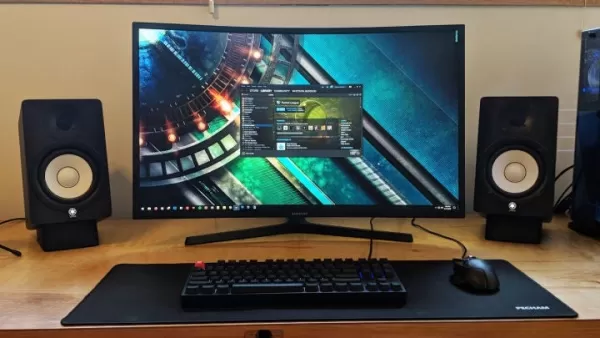 Aspect ratio: The aspect ratio affects the monitor's shape and is closely tied to its size. Most monitors use a 16:9 widescreen format, while ultrawide displays often feature a 21:9 aspect ratio, and some modern monitors offer even wider 32:9 options.
Aspect ratio: The aspect ratio affects the monitor's shape and is closely tied to its size. Most monitors use a 16:9 widescreen format, while ultrawide displays often feature a 21:9 aspect ratio, and some modern monitors offer even wider 32:9 options.
Screen resolution: Resolution determines the sharpness of your display. Common choices include Full HD (1920x1080), Quad HD (2560x1440), and Ultra HD or 4K (3840x2160). Higher resolutions come with higher prices and require more powerful graphics cards to maintain high frame rates.
Panel type: Different panel types offer unique benefits and drawbacks. Avoid TN panels as they are outdated and offer little advantage. IPS panels are known for excellent color reproduction and wide viewing angles, with response times around 3–5ms. "Fast IPS" or "SuperSpeed IPS" can reduce this to 1ms. VA panels provide a balance of image quality and response time but may show ghosting. Mini-LED and OLED panels offer superior contrast and HDR performance. Mini-LED uses backlighting for local dimming, which can cause blooming, while OLED controls brightness pixel by pixel, offering the best contrast but with potential for burn-in.
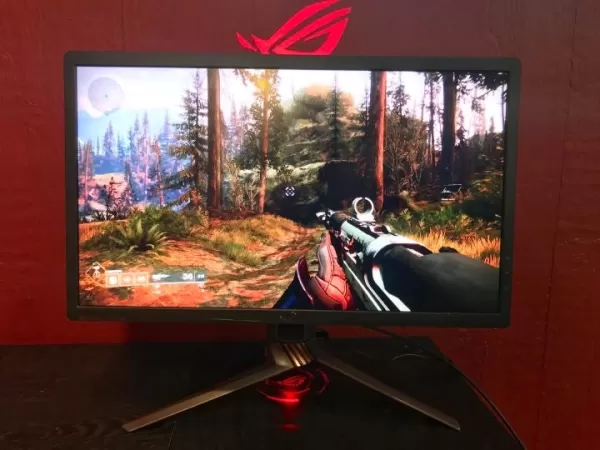 Response time: For competitive games like shooters and MOBAs, a 1ms response time is ideal. For most single-player and indie games, a response time of 3-5ms is sufficient. OLED panels currently offer the fastest response times at around 0.03ms, paired with high refresh rates for minimal input latency.
Response time: For competitive games like shooters and MOBAs, a 1ms response time is ideal. For most single-player and indie games, a response time of 3-5ms is sufficient. OLED panels currently offer the fastest response times at around 0.03ms, paired with high refresh rates for minimal input latency.
Refresh rate: The refresh rate determines how often the screen updates, impacting gameplay smoothness. Standard rates start at 60Hz, but higher rates like 120Hz, 144Hz, 240Hz, 360Hz, and even 500Hz are available. Higher refresh rates provide smoother visuals and can offer a competitive edge.
 G-Sync vs FreeSync: Variable refresh rate (VRR) technology like Nvidia G-Sync and AMD FreeSync ensures smooth gameplay by syncing the monitor's refresh rate with the GPU's frame rate, preventing screen tearing. G-Sync and FreeSync have different tiers, with higher tiers offering additional features like low framerate compensation and HDR support.
G-Sync vs FreeSync: Variable refresh rate (VRR) technology like Nvidia G-Sync and AMD FreeSync ensures smooth gameplay by syncing the monitor's refresh rate with the GPU's frame rate, preventing screen tearing. G-Sync and FreeSync have different tiers, with higher tiers offering additional features like low framerate compensation and HDR support.
Ensure your graphics card can handle the monitor's resolution and refresh rate to avoid wasting money on a display your system can't fully utilize.
Gaming Monitor vs. Gaming TV: Which Is Best for You?
Choosing between a gaming monitor and a gaming TV depends on your gaming preferences. Gaming TVs often excel in brightness, contrast, and color due to OLED or mini-LED technology, and may offer HDR at a lower cost than monitors. However, monitors typically provide lower input lag, higher refresh rates, and better pixel response times, crucial for competitive gaming.
Monitors often offer better value, with budget options providing high refresh rates and adaptive sync. Gaming TVs might lack features like standby modes that reduce burn-in risk, and their larger sizes may be better for couch gaming but less suitable for desk setups. Consider your needs for size, features, and gaming performance when making your choice.
Gaming Monitor FAQ
What's the difference between Nvidia G-Sync and AMD FreeSync?
Nvidia G-Sync and AMD FreeSync both use VRR technology to sync the display's refresh rate with the GPU's frame rate, preventing screen tearing. Both follow the VESA Adaptive-Sync standard, and many FreeSync monitors work with G-Sync, and vice versa. Nvidia offers G-Sync Compatible, G-Sync, and G-Sync Ultimate tiers, while AMD provides FreeSync, FreeSync Premium, and FreeSync Premium Pro, each adding features like low framerate compensation and HDR support.
What’s the best resolution for a gaming monitor?
The best resolution depends on your needs. For high refresh rates and budget-friendly options, 1080p is ideal. For crisp visuals, 4K is perfect for larger screens but requires a powerful graphics card. 1440p offers a balanced resolution and performance, suitable for competitive gaming with mid-range hardware.
Is HDR worth it?
HDR enhances color, brightness, and contrast, improving the visual experience in supported games. True HDR requires at least 1000 nits of peak brightness, though benefits can be seen above 600 nits. OLED and Mini-LED panels provide the best HDR experience, while many monitors claiming HDR support fall short of true HDR capabilities.
When is the best time to get a gaming monitor?
Gaming monitors can be pricey, so consider buying during major sales events like Amazon Prime Day, Black Friday, or Cyber Monday. Also, monitor sales often occur when new models are released, so keep an eye out for deals on previous generations.
-
1

Every Pokémon Game on the Nintendo Switch in 2025
Feb 25,2025
-
2

How To Read Black Panther Lore: The Blood of Kings in Marvel Rivals
Mar 01,2025
-
3
![Anime Vanguards Tier List – Best Units For Each Gamemode [UPDATE 3.0]](https://images.gzztb.com/uploads/35/17376012656791b0f12fa1c.jpg)
Anime Vanguards Tier List – Best Units For Each Gamemode [UPDATE 3.0]
Feb 27,2025
-
4
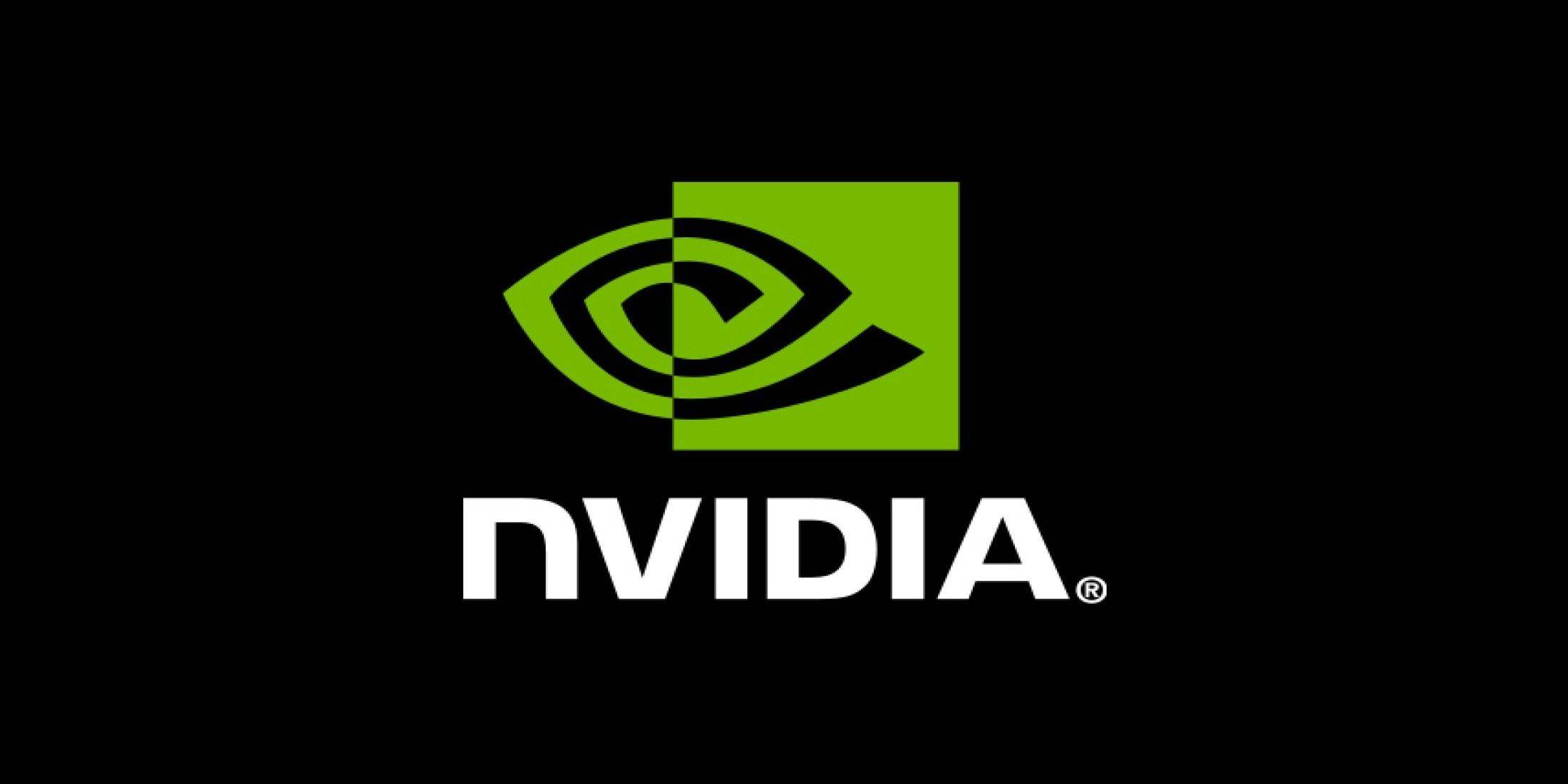
Nvidia RTX 5090 Specs Leak: Rumor Confirmed?
Mar 14,2025
-
5

Hearthstone has kicked off the Year of the Raptor with a myriad of new content
Mar 16,2025
-
6

Ragnarok X: Next Gen - Complete Enchantment Guide
May 25,2025
-
7

McLaren Returns to PUBG Mobile Collaboration
Aug 27,2024
-
8

January 15 Is Suddenly a Big Day for Call of Duty: Black Ops 6 Zombies Fans
Feb 20,2025
-
9

Assetto Corsa EVO Release Date and Time
Jan 05,2025
-
10

Roblox: Trucking Empire Codes (January 2025)
Mar 05,2025
-
Download

DoorDash - Food Delivery
Lifestyle / 59.30M
Update: Apr 23,2025
-
Download

Niramare Quest
Casual / 626.43M
Update: Feb 21,2023
-
Download

The Golden Boy
Casual / 229.00M
Update: Dec 17,2024
-
4
POW
-
5
Gamer Struggles
-
6
Mother's Lesson : Mitsuko
-
7
Poly Pantheon Chapter One V 1.2
-
8
How To Raise A Happy Neet
-
9
Dictator – Rule the World
-
10
Strobe













